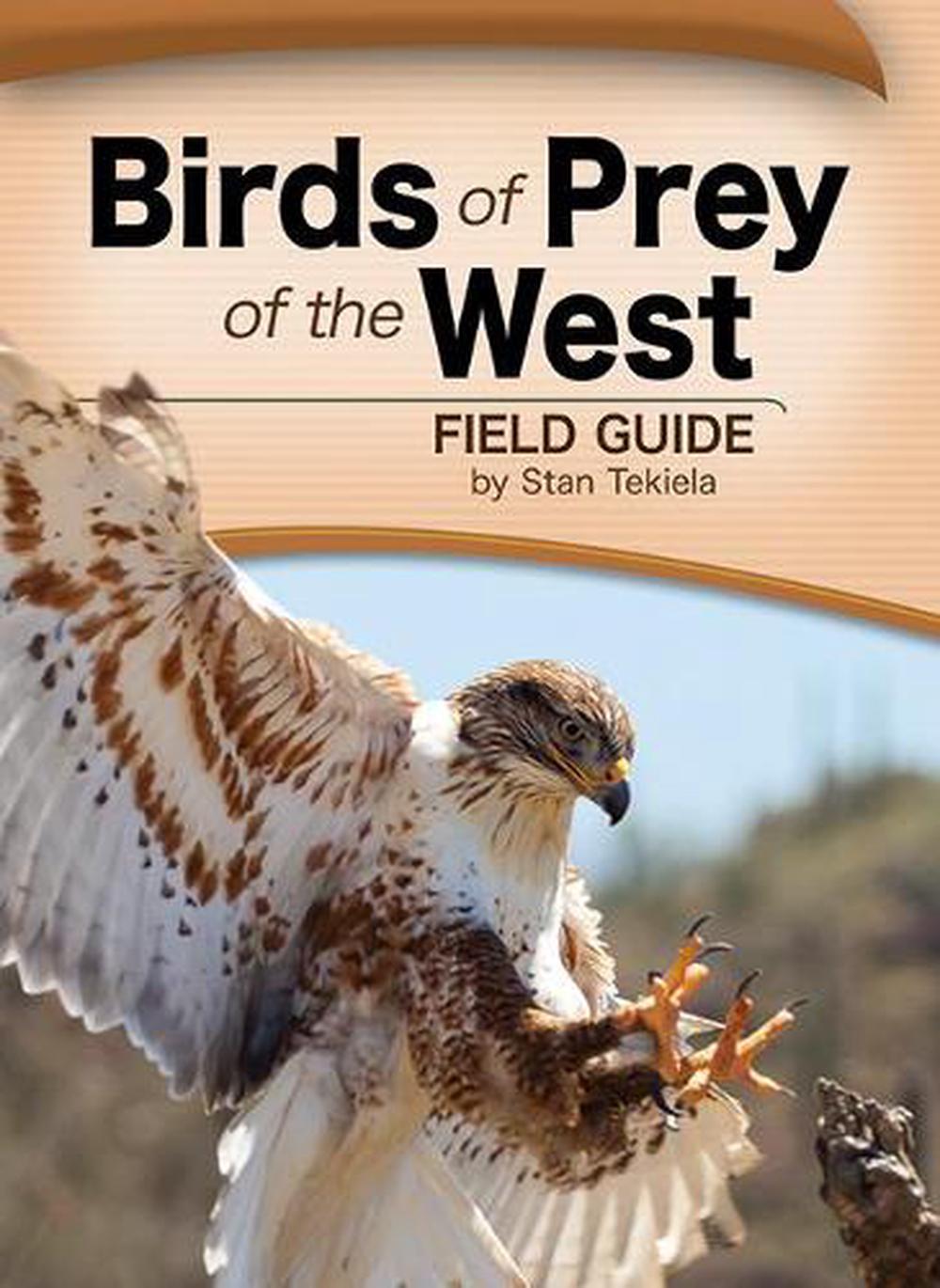
Birds of Prey of the West Field Guide
by Stan Tekiela
This field guide, organized by group and size, features full-color photographs and information to help readers quickly and easily identify the Western birds of prey they see.
Paperback
English
Brand New
Publisher Description
Identifying birds of prey is easier than ever! Stan Tekiela's famous field guide features Western birds of prey: all 52 species of hawks, eagles, falcons, kites, vultures, and owls found in Alaska, Arizona, California, Colorado, Idaho, Montana, New Mexico, Nevada, Oregon, Utah, Washington, and Wyoming. The birds are organized by group for ease of use, and each entry is accompanied by fact-filled naturalist information and gee-whiz facts that are accessible for beginners but informative for more experienced birders. Stunning photographs and Quick-Compare sections-such as raptors in flight-help to make watching birds of prey more enjoyable, informative, and productive.
Author Biography
Naturalist, wildlife photographer and writer Stan Tekiela is the originator of the popular state-specific field guide series. Stan has authored more than 190 educational books, including field guides, quick guides, nature books, children's books, playing cards and more, presenting many species of animals and plants. With a Bachelor of Science degree in Natural History from the University of Minnesota and as an active professional naturalist for more than 30 years, Stan studies and photographs wildlife throughout the United States and Canada. He has received various national and regional awards for his books and photographs. Also a well-known columnist and radio personality, his syndicated column appears in more than 25 newspapers, and his wildlife programs are broadcast on a number of Midwest radio stations. Stan can be followed on Facebook and Twitter.
Table of Contents
Introduction Birds of Prey of the West Tips for Identifying Birds of Prey In Flight Perching What Makes a Bird of Prey? Raptor Anatomy Raptor Nests Fledging Migration How to Use This Guide Range Maps Quick-Compare Pages Raptors in Flight Body Shape and Field Marks Wing Position in Flight Raptors Perching Sample Pages The Birds of Prey Falcons Kites Hawks Eagles Osprey Vultures Owls Helpful Resources Checklist/Index Photo Credits About the Author
Long Description
Identifying birds of prey is easier than ever! Stan Tekiela's famous field guide features Western birds of prey: all 52 species of hawks, eagles, falcons, kites, vultures, and owls found in Alaska, Arizona, California, Colorado, Idaho, Montana, New Mexico, Nevada, Oregon, Utah, Washington, and Wyoming. The birds are organized by group for ease of use, and each entry is accompanied by fact-filled naturalist information and gee-whiz facts that are accessible for beginners but informative for more experienced birders. Stunning photographs and Quick-Compare sections--such as raptors in flight--help to make watching birds of prey more enjoyable, informative, and productive.
Excerpt from Book
Barn Owl Tyto alba Family: Owls (Tytonidae) Size: L 16-19" (40-48 cm); WS 3-3 1⁄2' (.9-1.1 m) Weight: 1-1 1⁄4 lb. (.5-.6 kg) Male: A non-eared owl. Rusty tan on the back of head, back, wings and tail. Heart-shaped white facial disk, outlined in darker rusty brown. White breast and belly with many scattered tiny dark marks. Dark eyes. Long gray legs and gray feet. Ivory bill. White wing linings. Female: slightly larger than male, with a rusty wash over a spotted breast and belly Juvenile: fuzzy-looking with light gray-to-white plumage and a distinct heart-shaped face Habitat: farm fields, woods, cliffs, semi-wooded areas, suburban areas, prairies Food: mice and other small animals, birds, snakes Sounds: harsh hissing any time of year; female call is more quiet than the male; juvenile call is hoarser Compare: Easily identified by the white heart-shaped facial disk and dark eyes. The Snowy Owl (pg. 233) is much larger, has white plumage and lacks a heart-shaped face. Slightly larger than Short-eared Owl (pg. 213), which has a streaked chest and belly, dark marks around each eye and a less defined facial disk. Flight: long broad wings, rounded at the tip and cupped or bowed downward during flight; slow, shallow wing beats with silent flight Migration: non-migrator to partial; will congregate in groups during winter Nesting: cavity, in a man-made structure such as a barn, other outbuilding or wooden nest box, occasionally in a tree cavity, cliff crevice or small cave; 1 brood Eggs/Incubation: 3-7 white eggs; female incubates 30-34 days; male does the most hunting and feeds the nesting female before and after the young hatch Fledging: 52-56 days; male and female feed young; male does the majority of hunting and brings food to the female, who feeds the chicks; upon leaving the nest (fledging), the young continue to beg for food, at first waiting for the parents to bring food, then following them around to be fed; chicks learn to hunt by watching and copying their parents' behavior, staying with them until the adults prepare for nesting again Stan's Notes: Well known for nesting in old barns, but also nests in any dark cavity in trees or on cliffs. Readily takes to wooden nest boxes erected by people. Hunts by coursing over open areas after dark, looking and listening for small animals. Employs eyesight mainly, but can hunt in total darkness using its hearing alone. Will sway back and forth with head lowered when confronted. A good friend to farmers. One study showed that over the average 10-year life span of a typical Barn Owl, a single owl will consume approximately 11,000 mice. Based on the amount of food a mouse eats in a day, each year Barn Owls prevent roughly 13 tons of grain and crops from being eaten by mice. Monogamous and believed to mate for life, with pairs using the same nesting cavity for many years, sometimes for a century or more. Clutch size is dependent on the availability of prey-the more prey, the larger the clutch. The young hatch one per day (asynchronously) over two weeks, creating a range of ages within the nest. Families reside at the same nesting site for generations.
Details

